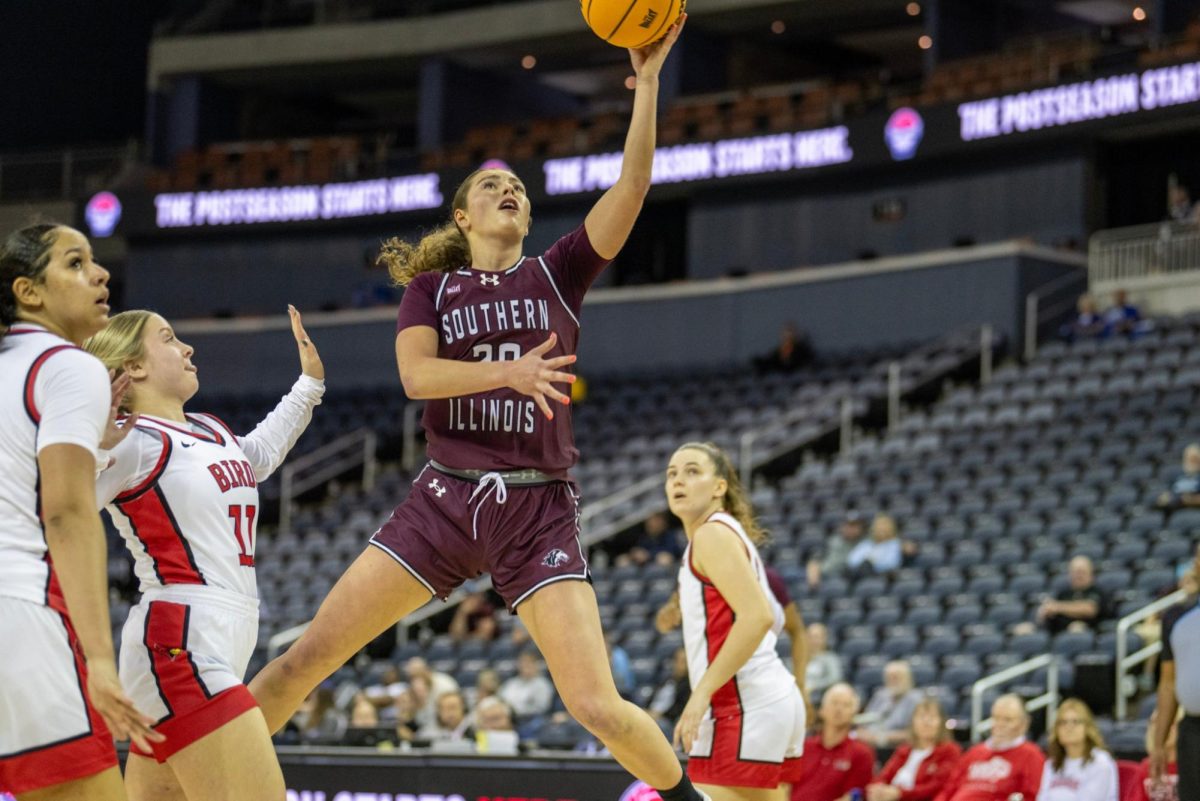NFL: America’s worst monopoly
November 17, 2015
The National Football League is ruining the sport of American football.
The evolution of the NFL has deteriorated the sport into a commercial based flag-fest that turns the 60-minute games into three and a half hour snooze fests.
That being said, I love the sport of football. I grew up on the sidelines of Huskie Stadium in Dekalb watching my father coach the DeKalb Barbs every fall Friday night. It teaches discipline and teamwork, and I would not be who I am without the sport.
Advertisement
Football is unique, the clock runs when the ball is not in play. According to a Wall Street Journal study in 2010, only 11 minutes of football is actually played in an average NFL game.
That means in a 15-minute quarter there is less than three minutes of football played.
Compare that to the amount of commercials being aired during the broadcast. The Journal’s study found commercials took nearly an hour out of a scheduled three-hour broadcast.
Commercial breaks take up nearly one-third of the broadcast, compared to 3 percent for actual football.
This week’s Monday Night Football game between the Houston Texans and the Cincinnati Bengals did not end until nearly 11 p.m. central time. The Monday night football countdown pre-game show started at 5 p.m.
The NFL rule book requires eight commercial breaks per half, but a commercial timeout is taken for eight different reasons.
- A timeout called by either team
- Instant replay stoppage
- Game stoppage after a score
- Game stoppage after a kickoff or punt (excluding the opening kickoff of each half)
- Game stoppage after a turnover
- Injury timeout
- The end of the first and third quarters
- And the infamous two-minute warning
The two-minute warning got its start in pre-1960 NFL when game clocks were not required. The referee would stop the game in order to inform both coaches how much time was left.
Advertisement*
“[The two-minute warning] had become an important strategic part of the game, helped build excitement during game-closing drives and offered broadcasters an opportunity to sell an extra set of commercials,” said Ethan Trex of Mental Floss, an online magazine.
The NCAA does not have a two-minute warning anymore and they still seem to be functioning. The only reason for the NFL applying the two-minute warning is to squeeze in as much commercial time as possible.
It does this because huge TV contracts line the pockets of NFL owners and other front office types, at the expense of young men throwing themselves at each other on any given Sunday.
The NFL is hoping to achieve $25 billion annual revenue by 2027.
Currently media and television rights to broadcast games cost $5 billion, to get to $25 billion annual income USA Today predicts TV contracts will skyrocket to $15 to 17 billion.
Not only do you hardly get to watch any football, but the evolution of the NFL rulebook makes it difficult for the casual viewer to understand the game.
Does anyone actually know what a catch is in the NFL?
The New York Giants were losing to the New England Patriots late in the fourth quarter Sunday. Giants’ quarterback, Eli Manning, threw a pass in the endzone to wide receiver Odell Beckham Jr. Beckham Jr. caught the ball with both feet down, the ball was then swatted out of Beckham Jr.’s hands shortly after and the play was ruled incomplete.
Rewind to Week 5 in the NFL. The Detroit Lions were on the two-yard line when quarterback Matthew Stafford threw a slant route to wide receiver Golden Tate. Tate caught the ball, and then crossed the goalline. The ball was quickly knocked out of his hands by a Chicago Bear defender, much like the Beckham Jr. catch.
The NFL subsection on touchdowns that most relates to these plays is as follows:
“The ball is on, above, or behind the plane of the opponents’ goal line (extended) and is in possession of a runner who has advanced from the field of play into the end zone.”
Now, whether either player established themselves as a runner is open for interpretation, but the similarity of these two catches is baffling. The only difference is one was ruled a touchdown and the other was not.
That’s not the only thing confusing the casual fans of football.
The multitude of flags slows the game down. I know I’m not the only one getting tired of seeing Ed Hochuli’s veiny triceps every time he signals an automatic first down on defensive pass interference penalty.
There are eight different variations of the “delay of game” penalty, which includes, “Repeatedly snapping the ball before the referee can assume normal position.”
So not only do we have to wait for the refs to get to their spots, but you also might not even understand the penalty after it’s called.
Moving forward, I don’t know what we can do about it. Unless we have another professional football league emerge, much like the United States Football League tried in 1983, I don’t think we have any other choice but to watch college football Saturday mornings.
Evan Jones can be reached at EJones@dailyegyptian.com or at 536-3304
Advertisement








